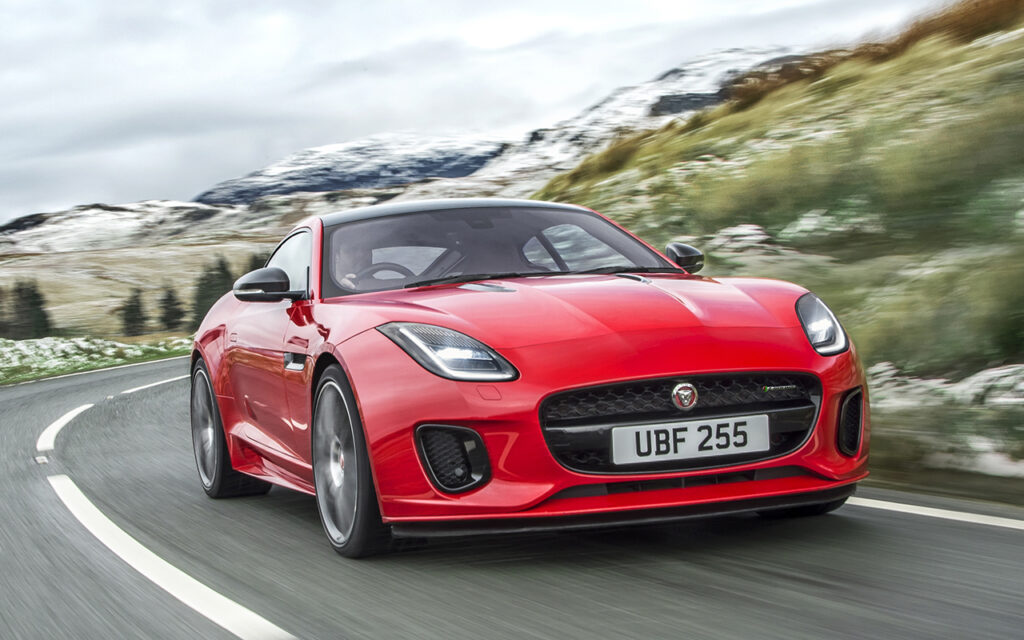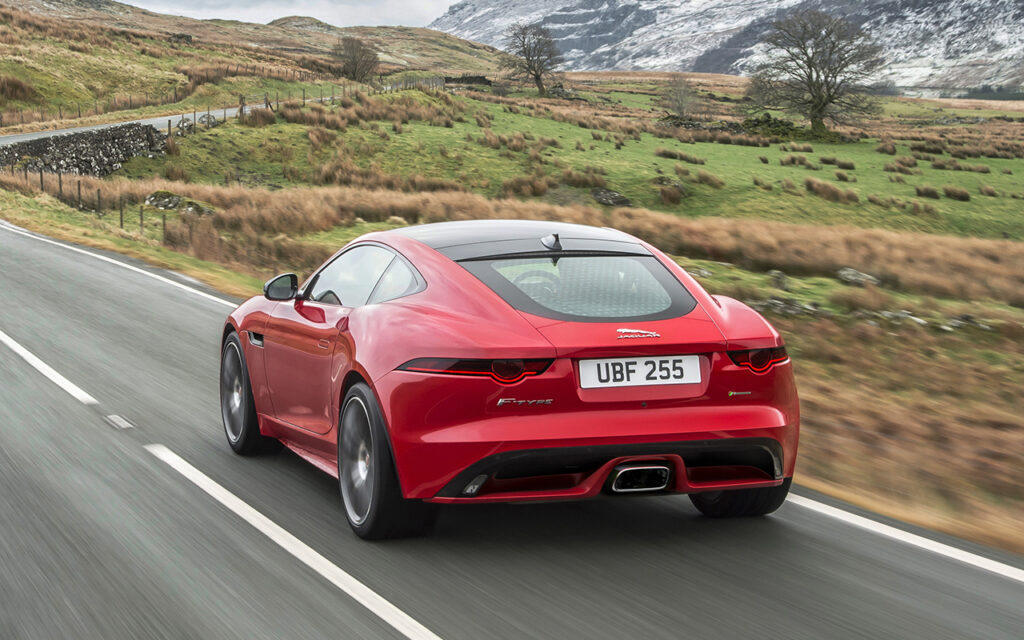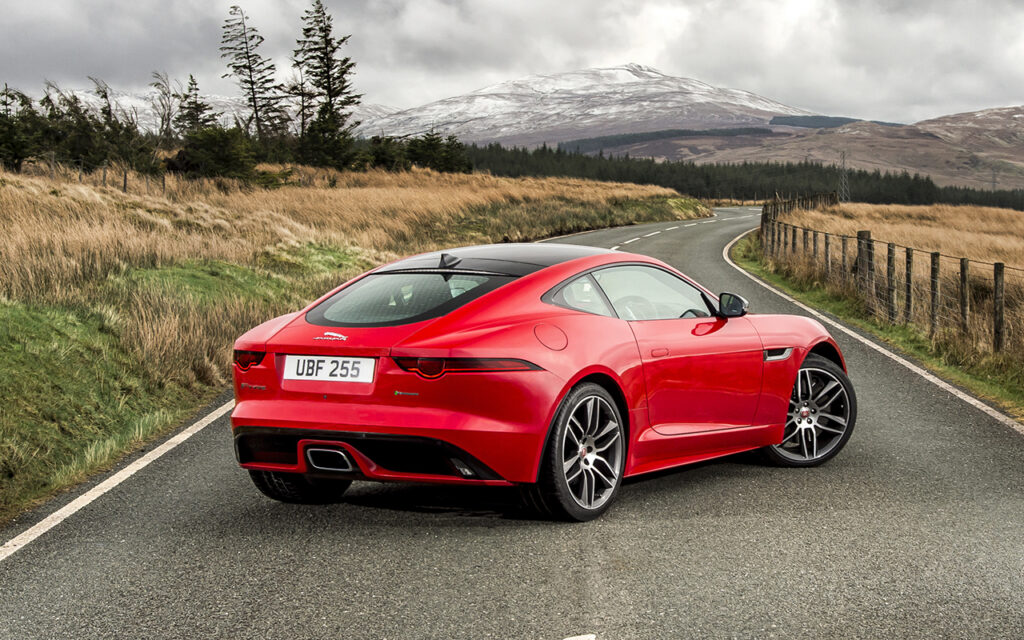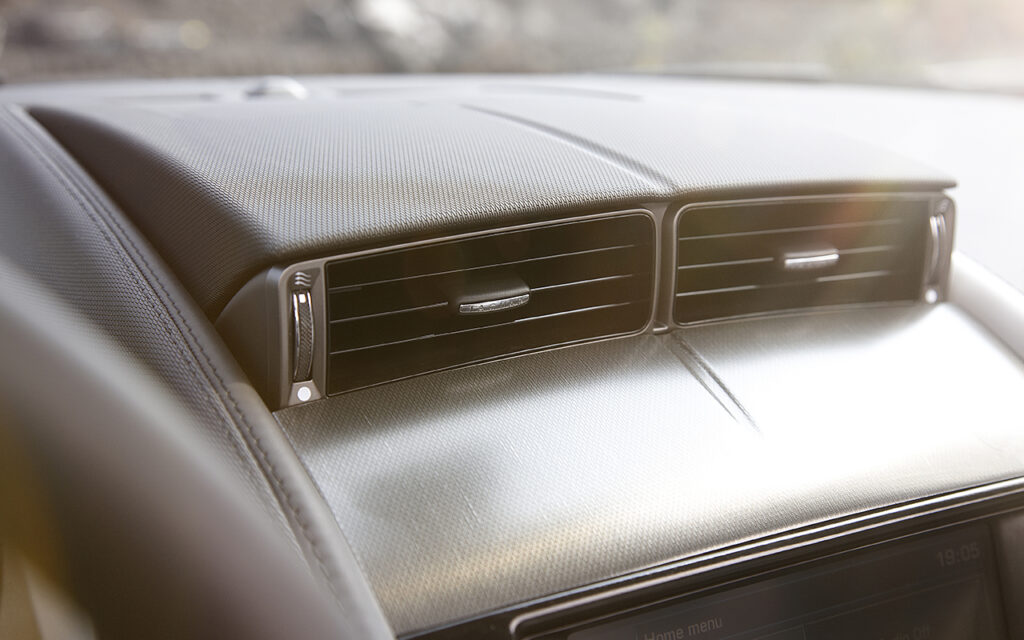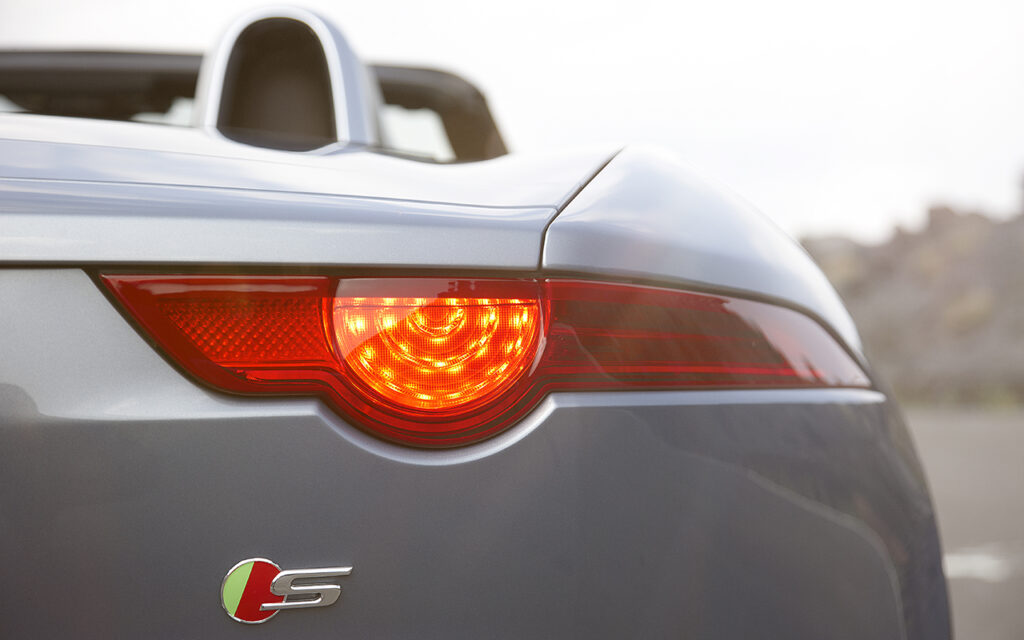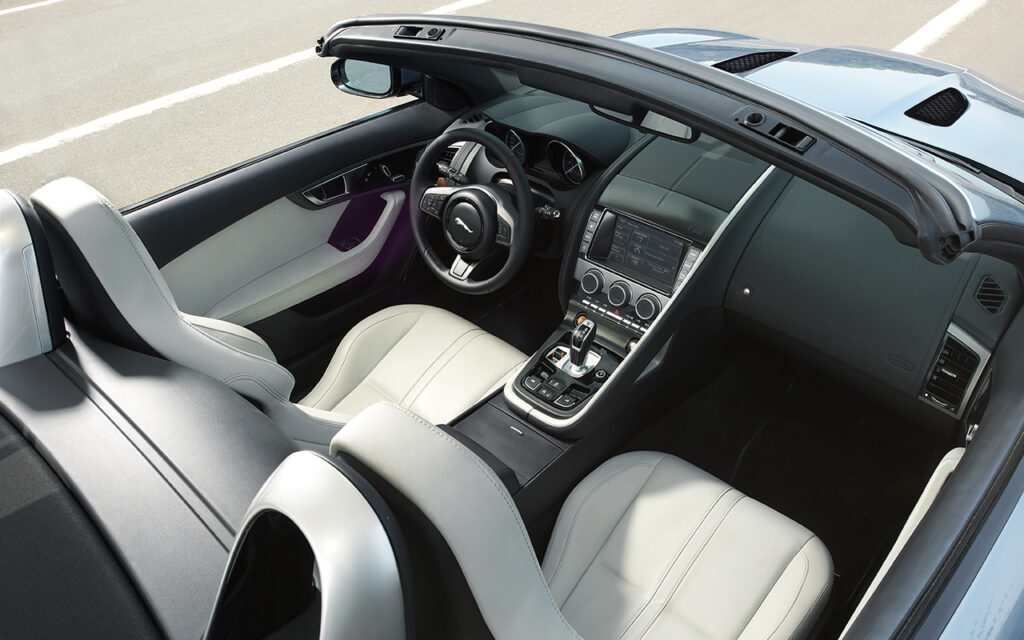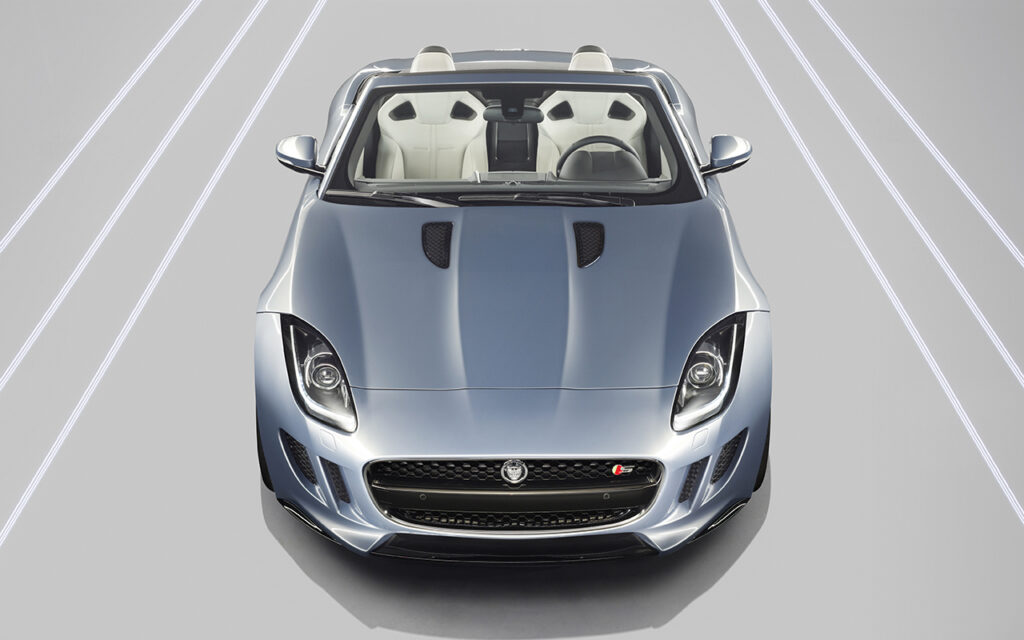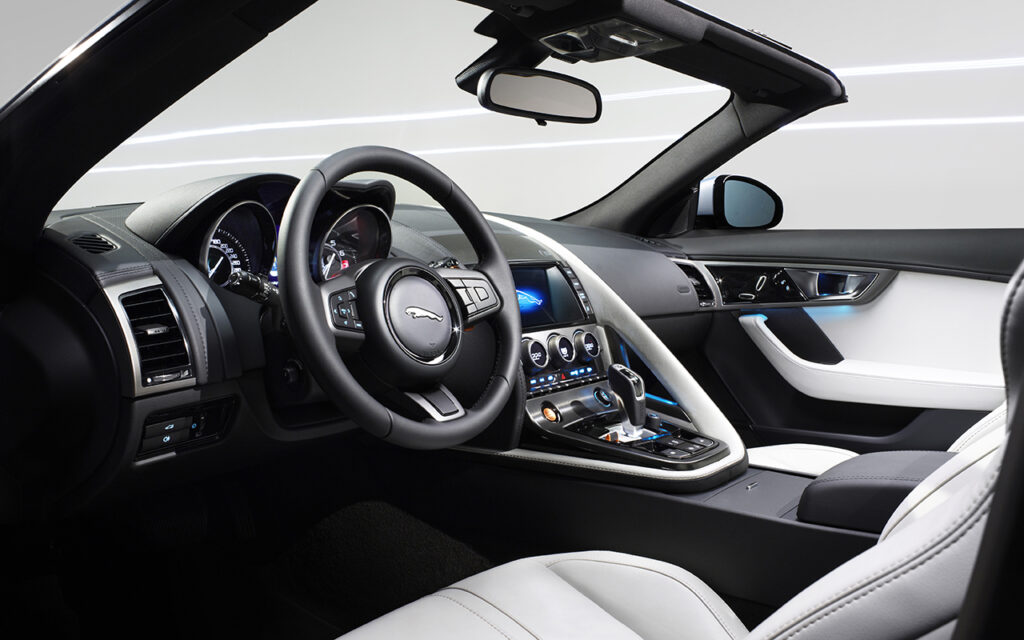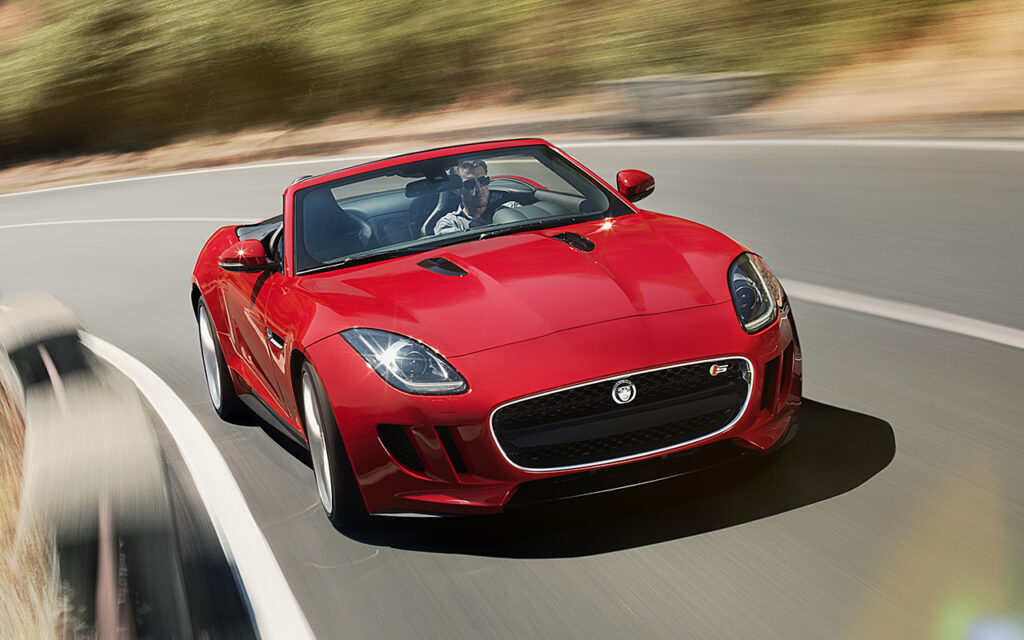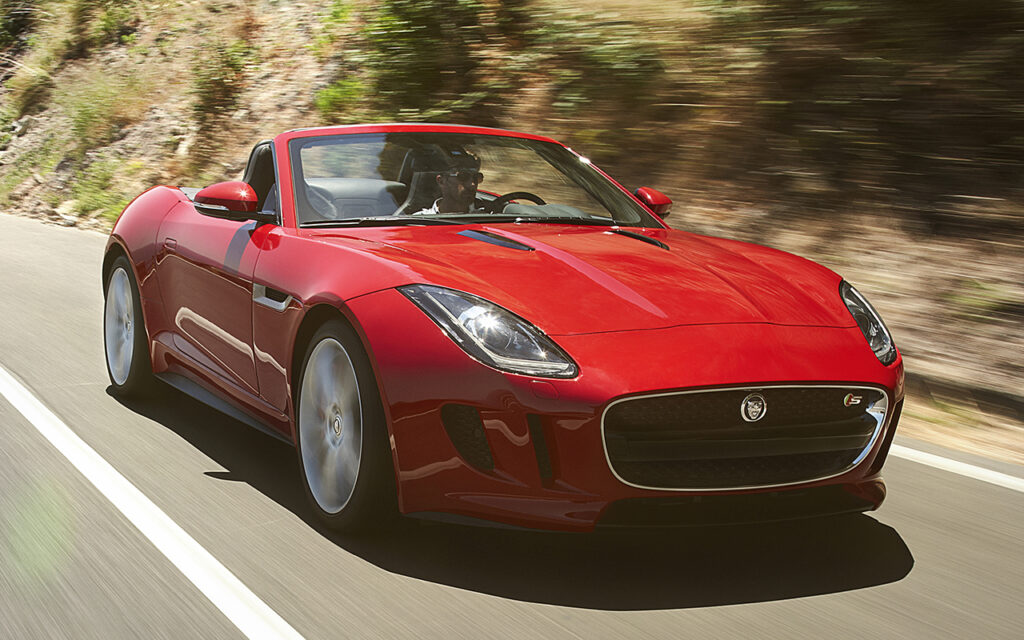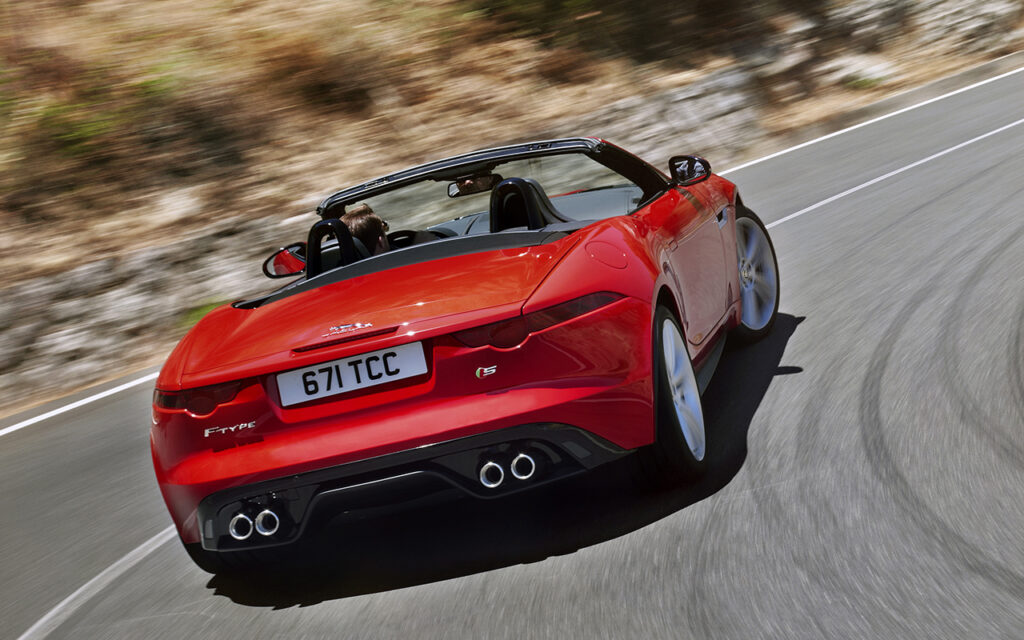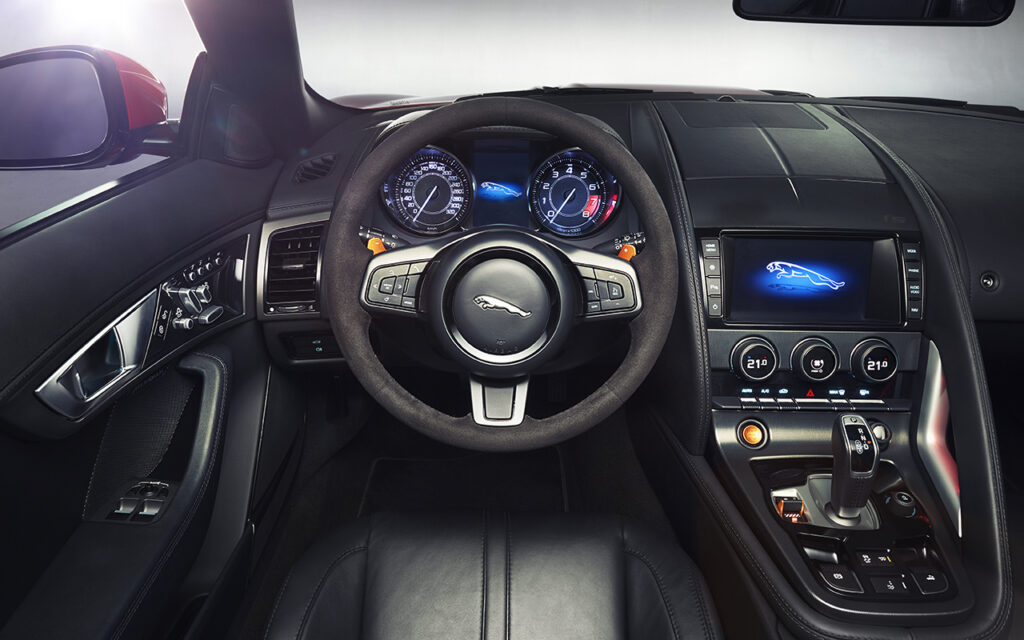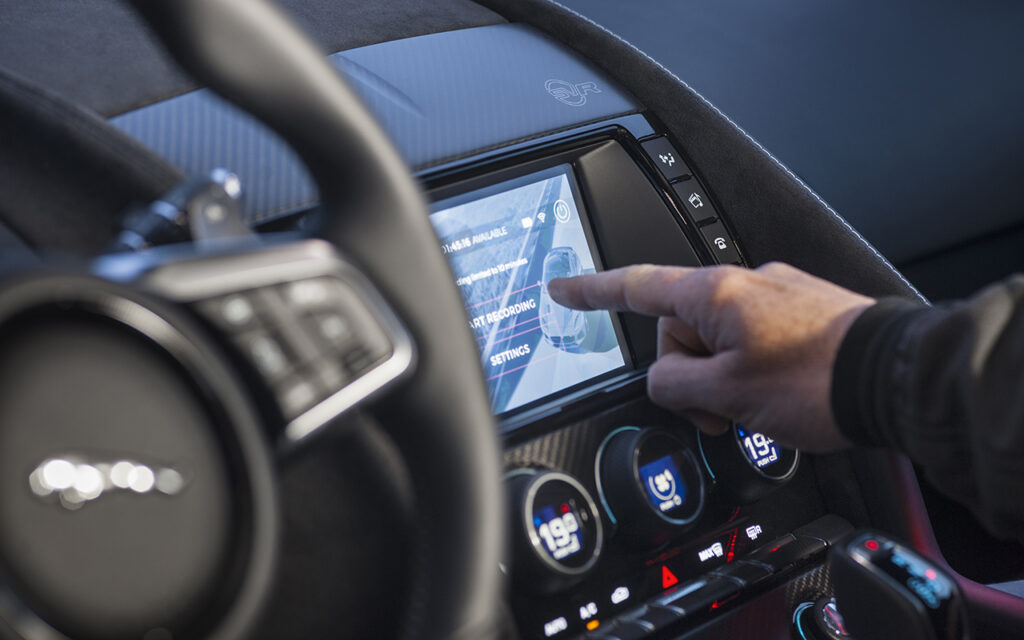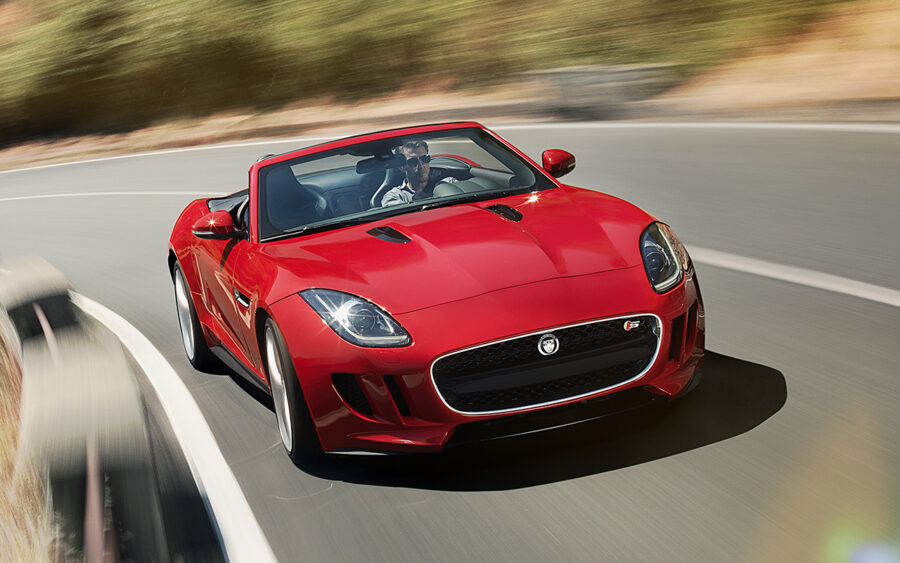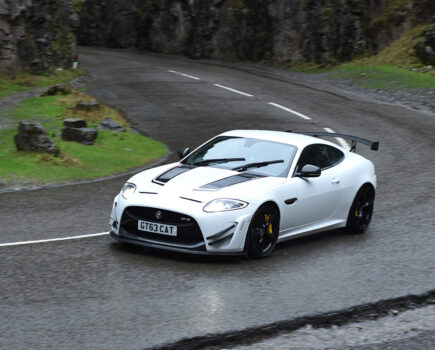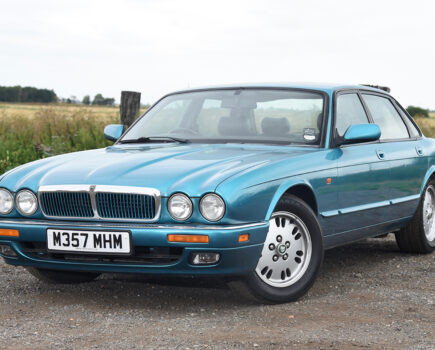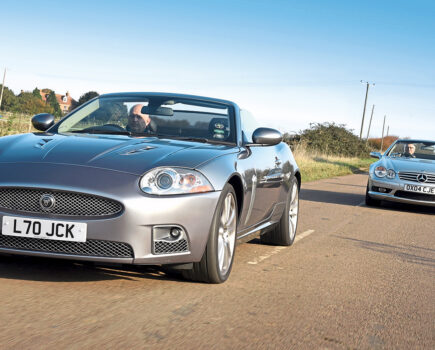One of Jaguar’s finest achievements, the F-Type is a great all-round sports car with a huge range of drivetrain options. Here’s how to buy
Words: Rob Hawkins
Jaguar’s reputation for its sports cars lives on in the F-Type, packed with modern technology and boasting high-performance credentials, including supercharged and turbocharged engines, eight-speed gearboxes and all-wheel drive.
Consequently, on paper, the performance figures are mouth-watering: a 0-60mph time of 3.8 seconds for the 5.0-litre V8 supercharged Project 7 and 3.9 seconds for the AWD F-Type R with the same forced induction engine. Even the entry-level models – such as the supercharged 3.0-litre V6 and turbocharged 2.0-litre F-Types – hit 0-60mph in 4.8-5.4 seconds.
There are numerous variations of the F-Type; in 2015, there was a massive range of 14 derivatives of the coupe and convertible. To help make sense of them all, it’s easiest to start by looking at the engine options, which fall into three categories: four-cylinder, V6 and V8.
These petrol engines are all supercharged with the exception of the four-cylinder, which is a 2.0-litre turbocharged unit. The V6 displaces 3.0 litres, whereas the V8 boasts 5.0 litres. Several models have been produced around these engines, such as the F-Type R, powered by a 550PS version of the 5.0-litre V8 that produces a neck-breaking 680Nm of torque. Limited-edition models include the fastest F-Types of them all, the Project 7 of 2015 and the 400 Sport for 2018.
Mixed into this range of engine options are either rear-wheel-drive or all-wheel drive models, which we’ve outlined in more detail elsewhere. Please note any prices were correct at time of writing but may vary; use these as a rough guide for your running costs calculations.
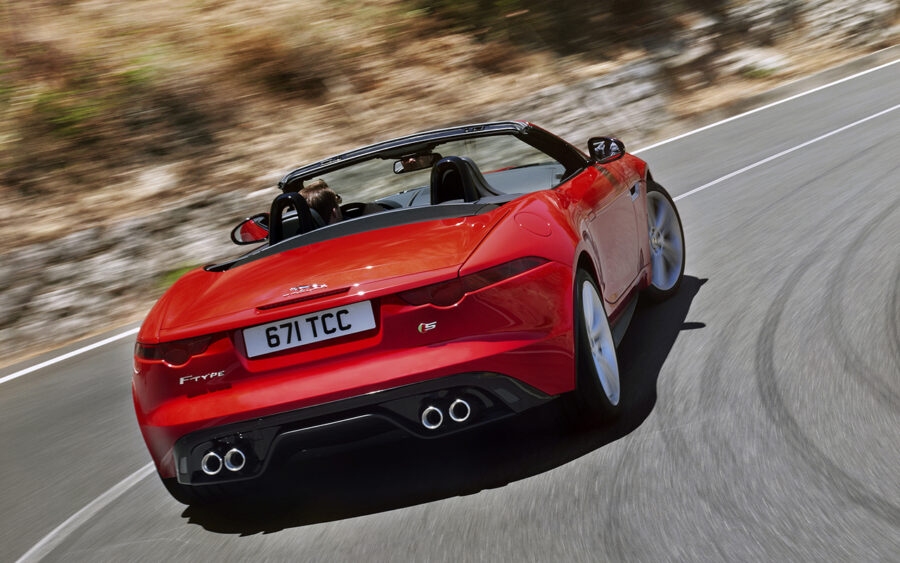
Engines
An annual inspection and service is essential for the F-Type, with an engine oil and filter change being the minimum requirement, irrespective of mileage. Check for evidence of regular maintenance, ideally through dealers or specialists.
The cost of repairs and routine servicing can vary greatly according to the model of F-Type and whether you choose to fit genuine parts by a main dealer or a specialist, or aftermarket parts by a local garage or specialist. Note that many genuine parts carry a two-year warranty and, if fitted by a specified specialist or any main dealer, that warranty also covers the labour. The Jaguar independent specialists we have spoken to are keen to stress the importance of fitting genuine parts to ensure reliability, and often question the quality of parts that are far cheaper.
The F-Type’s range of petrol engines (2.0-litre four-cylinder, 3.0-litre V6 and 5.0-litre V8) require a range of oils. According to Millers Oils, that is 7.65 litres dry-filled (6.53 litres service-filled) of its XF Longlife 0W-20 fully synthetic oil every 12 months or 26,000km for the 2.0-litre Ingenium engine, whereas the 3.0-litre V6 requires 8.75 litres dry-filled (7.25 litres service-filled) of 5W-20 or in some cases 0W-20 at the same interval, and 8.9 litres dry-filled (6.5 litres service-filled) of 0W-20 for the 5.0-litre V8. However, the recommended oil can vary according to specific models.
The oil drain plug on these engines is located at the base of the sump and is accessed by removing the undertray. On the 3.0-litre V6 engine shown here, the sump drain plug has a 13mm head. A new drain plug costs between £2 and £10.
The oil filter on the V6 and V8 is accessed from inside the engine bay and is conveniently located inside a housing. Once undone, the filter can be removed from inside and replaced. Budget for between £8 and £30 for a new filter, depending on whether you want aftermarket or genuine.
An annual engine service should include oil and filter, air filter(s), a new sump plug and a new pollen filter. British Parts UK offers a filter and sump plug service kit for the V6 for around £80, with a couple of 5.0-litre containers of oil, priced at around £100.
Eurojag tells us that it has a steady demand for the 3.0-litre V6 engine, which sells second-hand for £5,500–6,000. Oil pump failure is the most common cause of engine failure.
Tom Lenthall has found that timing chain tensioners are becoming a problem for the 5.0-litre engine as a result of the spring inside the tensioner weakening and the chain becoming slack. Replacement costs around £2,000. Tom Lenthall has also found water pumps fail, which often starts with a rattle and develops into a coolant leak. A genuine new water pump for a 3.0-litre V6 costs £156 from SNG Barratt.
The supercharger’s nose damper can fail and there is a replacement kit available from Jaguar for roughly £360, although Tom Lenthall sells the damper on its own for a more reasonable £60, with fitting costing around £384.
The traditional inline layout of the F-Type’s engines means the auxiliary drivebelt is mounted at the front of the engine bay, along with the supercharger drivebelt for the respective model. Budget for between £25 and £50 for a drivebelt, £25–40 for an idler pulley and £50 for an automatic tensioner. A supercharger drivebelt costs between £15 and £45, depending on whether it’s aftermarket or genuine.

Transmission
While a six-speed manual gearbox was available on the V6-engined F-Type between 2015 and early 2019, the more commonly found gearbox is the ZF eight-speed automatic. Millers Oils recommends oil should be replaced every 48,000km (30,000 miles) with its Millermatic ATF 8SP. The filter for the oil is part of the plastic sump; Tom Lenthall recommends changing every 50,000–70,000 miles (every other gearbox oil service). Budget for between £100 and £165 for a new one.
A complete filter kit, including 6.0 litres of ZF gearbox oil, costs around £260 from British Parts UK. Tom Lenthall charges £450 to complete an oil and filter service on a six-speed gearbox and £550 for an eight-speed.
The gearbox oil drain plug is made of plastic. It has a plastic Allen key-shaped insert with a thin wall that can easily spread and cause an Allen key bit to slip. Eurojag has found that using a Torx T55 bit is sometimes more successful at undoing it, but has also resorted to using a hammer and chisel to slacken the drain plug.
The rear differential has a ⅜in square insert for its inspection/refill and drain plugs, which can be undone with a ⅜in ratchet.
The level should be checked at every service interval. It should hold roughly 0.8 litres of synthetic 75W90 oil, including GL-4 and GL-5 rated (depending on the model and use).
The front diff on AWD models also has inspection/refill and drain plugs. It requires 0.3 litres of 75W90 in a range of GL4, GL5, synthetic and semi-synthetic specifications, again depending on model.
AWD models have a transfer box, and its synthetic 75W-rated oil should be renewed every three years or 50,000 miles, according to Millers Oils. It requires half-a-litre, or 0.62 litres if dry-filled.
The rear differential on the 3.0-litre V6 appears to be the most troublesome, especially the one with the electronic control unit. When it fails, the best option is to replace it. Eurojag sells second-hand units for between £420 and £600, depending on specification.

Bodywork
With its aluminium body, the F-Type doesn’t appear to have a major problem with corrosion. However, on the underside at the rear, a subframe and a selection of brace bars appear to corrode. At present, it appears to be only superficial surface corrosion, but it’s sufficiently bad to result in their mounting bolts becoming seized, or shearing off when attempting to undo them. As of December 2018, Jaguar was repairing or replacing the brace bars.
Eurojag has dismantled numerous F-Type and found many examples have corroded rear subframes and brace bars, which should have been better protected during manufacture. Insufficient zinc-nickel plating appears to be the reason. It sells cleaner brace bars for £96.
The brace bar is secured with a selection of 10mm, 13mm and Torx T45 bolts. Once removed, it can be stripped, blasted and powder-coated to help preserve it. The rear subframe is a little more complicated to remove because it holds the differential and rear suspension, so a full rear-end strip-down is required.
Engine servicing and general inspection work often starts underneath a vehicle and on the F-Type, there’s a large undertray to remove. This is secured with an assortment of 10mm-headed bolts that can corrode into their fittings, so apply penetrating fluid before attempting to undo them. The undertray has a felt exterior, making it less brittle than the traditional hard plastic undertrays fitted to many other Jaguars. While this hopefully means it won’t perish and fracture, it does seem to be more efficient at absorbing liquids, so it can become quite soggy and may need removing and drying out.

Steering, suspension and brakes
The F-Type’s rear suspension is very similar to that in the S-Type and XF. It features a multi-bushed lower arm with a coilover shock absorber, an upper double wishbone, a track-control arm (stabiliser link) and an anti-roll bar. Drop-links cost around £16 each and the D-bushes for the anti-roll bar cost around £20 for a pair. Expect to pay roughly £36 for a track-control arm and between £80 and £200 for a single rear shock absorber.
Just like many other Jaguars, worn suspension bushes are a common problem. A new suspension component is often the only answer if separate bushes are either not available or are uneconomical to replace. However, some bushes are available, including those for the upper wishbone, costing around £40 for the two. As for the lower arm and all of its bushes, these are available separately for around £30 each. A genuine new lower arm costs around £220 from SNG, depending on the model (some may be more expensive), while Eurojag sells used ones for £120. A genuine upper rear wishbone costs around £300, although Eurojag sells used ones for £60. A complete used rear suspension assembly (one corner) from Eurojag costs £420.
The F-Type’s front suspension is fitted to a subframe assembly that’s of a similar design to the XF. Consequently, the entire assembly can be unbolted from underneath the front of the vehicle and removed, along with the front brakes and steering rack. The suspension consists of a coilover shock absorber secured to a single lower suspension arm. There’s also an additional banana-shaped lower arm, an anti-roll bar and a double upper wishbone.
The aluminium upright, which houses the hub assembly, extends up into the wheelarch where it connects to the outer ball-joint for the upper wishbone. Typical of what most Jaguar owners and specialists call the banana arm the front-most bush wears, resulting in uneven tyre wear and poor handling. The bush costs around £45 new and can be pressed out and renewed, but a new complete arm costs around £90. Tom Lenthall recommends replacing the entire banana arm, just in case the other end fails.
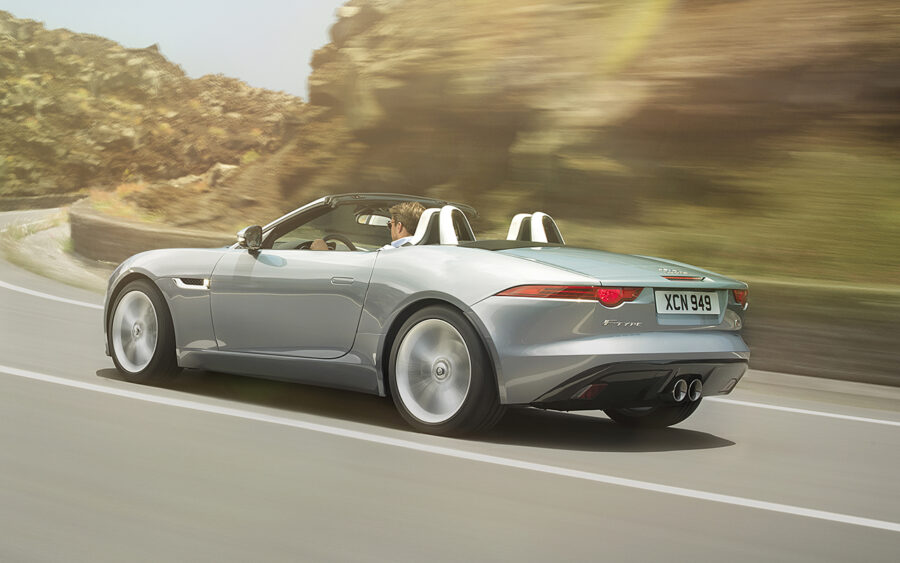
A genuine lower arm costs around £130 without fitting (Eurojag sells used arms for £84).
Worn anti-roll bar-drop links are easily fixed with a new drop-link that should cost less than £15 on a RWD model and £35 on an AWD. The D-shaped mounting bushes for the anti-roll bar cost around £22 each.
Should the inner bushes fail for the upper wishbone, then polyurethane replacements are available for around £90, although a new wishbone costs around £120 and a second-hand item from Eurojag is priced at £60. Switching from rubber bushes to polyurethane can result in a harsher ride quality and, as Tom Lenthall comments, “We are currently experiencing issues with polybushes creaking, so be careful on which brand you use.”
On the front of the F-Type, there are 355mm/380mm-diameter ventilated brake discs, while 325mm/380mm-diameter ventilated discs are on the rear. The front calipers feature pistons to operate the inner brake pad and a pair of slider bolts to operate the outer brake pad. At the rear, there’s a similar set-up with a single piston and an electronic handbrake.
Routine maintenance of the brakes is essential to keep them in good working order, which involves extracting the brake pads and cleaning the caliper carriers. At the rear, the pads must not be extracted until the electronic handbrake has been switched to service mode, which can be completed using diagnostic equipment. This avoids the risk of the handbrake being accidentally activated and causing injury. It also ensures the handbrake is correctly wound back to avoid dragging after reassembling the brakes.
Aftermarket brake discs and pads are typically cheaper than genuine components. While some specialists argue that cutting costs on these parts is not worthwhile for such a high-performance sports car, with aftermarket discs priced at between £50 and £130 each, and genuine discs costing around £220 each, there’s a huge difference in many cases. A genuine set of brake pads for 355mm discs costs around £270, whereas an axle set of Mintex pads costs less than £50.
The F-Type’s brake fluid should be tested at every service interval to assess its moisture content, and renewed every two or three years with DOT 4-rated fluid.
Wheel diameters ranging from 18in to 20in are fitted with Pirelli tyres as standard, although other brands can be fitted, if desired. In some cases, the width of the wheels is different between the front and rear, along with the dimensions of the tyres. Kerb damage is more of a problem with larger wheels that have lower-profile tyres. Budget from around £50 per wheel should it need to be refurbished.
Sensors monitoring tyre pressure are attached to each tyre valve and fitted on the inside of the rim of the wheel (concealed inside the tyre). Should they fail, budget for around £15 for a new one, which is secured to the wheel rim with a 10mm nut; it requires the tyre to be partly or fully removed from the wheel to change. After fitting it and refitting the road wheel, the vehicle needs to be driven for the new sensor to be recognised (known as a drive cycle).
Look out for uneven tyre wear, which can be an indication that the wheel alignment is incorrect, or suspension components are worn and need replacing. For a high-performance sports car, the F-Type is heavy on tyres, so regular assessment of the treads is essential, along with weekly checks of the tyre pressures; 2016 models onwards can display tyre pressure readings on the dashboard using data from the tyre pressure monitoring system (TPMS).
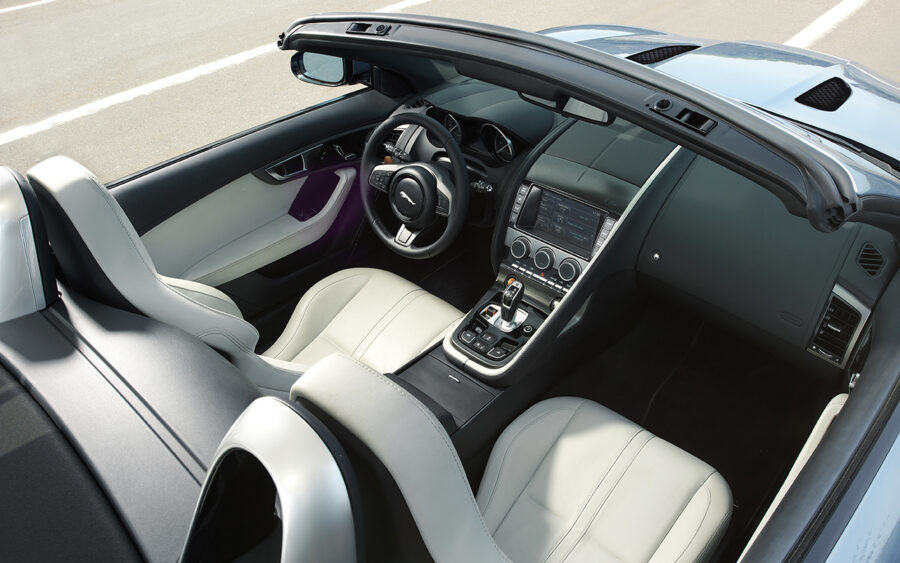
Interior and electrics
Common door-related problems have yet to emerge on the F-Type, but if the older XF is anything to go by then it won’t be long before door latches and window regulators begin to fail. If and when they do, Eurojag has a supply of second-hand units at the ready. Expect to pay £72 for a door latch and £96 for a window regulator.
The reliability of electrical equipment on board the F-Type appears to be good at present. Eurojag sells plenty of rear light units, for £180 each, which possibly had failed LEDs. A new, genuine rear light unit costs around £350.
The stud that connects two power leads together inside the offside front wheelarch seems to be a common area for corrosion. When we visited Eurojag to photograph a part-dismantled F-Type, we noticed this corrosion and photographed it (as shown here). Tom Lenthall also comments that it has recently seen this problem on five F-Types. The solution is to clean and treat the corrosion and renew the stud.
Jaguar F-Type: our verdict
So, if you like the looks, the performance and the cost of buying an F-Type, all that remains is whether you can stomach the cost and what’s involved in owning, maintaining and repairing one.
Despite its young age, there are some foibles to watch out for – but get a good example and you’ll have a practical, high-performance sports car that’s a little bit less obvious than a Porsche 911.

